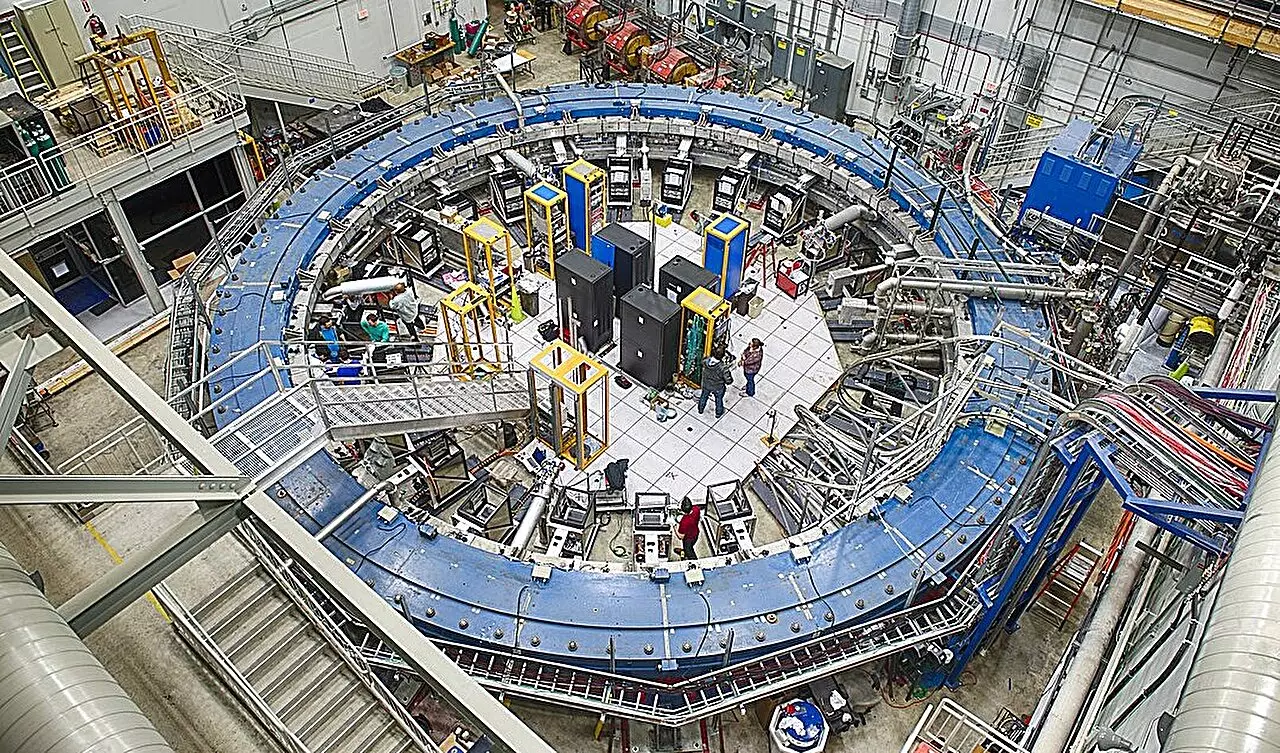The magnetic moment of a particle with spin, such as the muon, is a fundamental property that plays a crucial role in understanding the interaction between particles and magnetic fields. The theoretical value of the muon’s magnetic moment is predicted to be 2 according to the Dirac equation, formulated by physicist Paul Dirac. However, high-energy experiments in particle accelerators have shown that the experimental value deviates slightly from this theoretical prediction, with the most precise value obtained at the Fermi National Accelerator Laboratory in the United States being 2.00116592059. This small difference, known as “g-2”, has puzzled scientists since its discovery in 1948, leading to speculations about the involvement of dark matter particles, Higgs bosons, or unknown forces in the process.
Physicist Diogo Boito and his collaborators have delved into the mystery of the muon’s magnetic moment, aiming to understand the gap between experimental data and theoretical predictions. They identified two key methods used to determine g-2: one based on experimental data and the other on simulations of quantum chromodynamics (QCD). The discrepancy between the results obtained from these methods poses a significant challenge in exploring the potential contributions of exotic particles to the muon’s magnetic moment.
The muon, belonging to the class of leptons, exhibits instability due to its higher mass compared to the electron. When muons interact with a magnetic field, they decay and form a cloud of particles, including electrons, positrons, W and Z bosons, Higgs bosons, and photons. The presence of these virtual particles in experiments complicates the measurement of the muon’s actual magnetic moment, which surpasses the theoretical value of 2 calculated by the Dirac equation.
To address the discrepancy in muon g-2 predictions, Boito and his team devised a novel method to compare results from lattice QCD simulations with those obtained from experimental data. By focusing on contributions from connected Feynman diagrams, which describe particle interactions in a graphical manner, the researchers were able to pinpoint the source of the problem. The consistency of results obtained from lattice QCD simulations highlighted the potential underestimation of experimental data from electron-positron collisions, particularly in the two-pion channel.
Recent data from the CMD-3 Experiment at Novosibirsk State University in Russia suggests that the older two-pion channel data may have been inaccurately estimated, shedding light on the discrepancy observed in muon g-2 predictions. This discovery opens up new avenues for further research and investigation into the fundamental components of particle interactions that contribute to the magnetic moment of the muon.
The quest to decode the mystery of the muon’s magnetic moment offers a glimpse into the intricate world of particle physics and the complexities of quantum mechanics. By bridging the gap between experimental and theoretical predictions, scientists are paving the way for groundbreaking discoveries that could revolutionize our understanding of the fundamental forces that govern the universe.


Leave a Reply